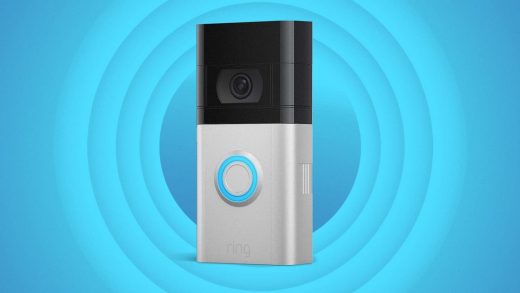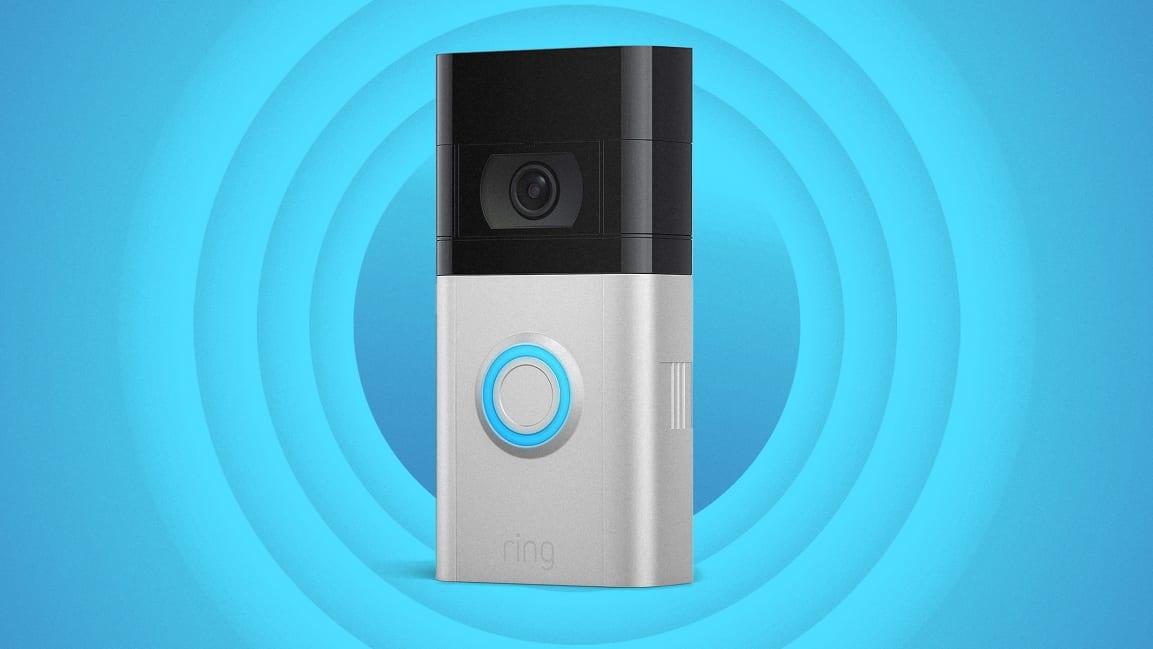The Ring’s doorbell design hasn’t changed since 2014. Other companies should follow its lead
Today, the home security brand Ring is announcing its latest smart home doorbell, the Ring Video Doorbell 4. It’s 20% thinner and 40% lighter than the Ring Video Doorbell 3.
Wait, no it’s not. Hold on. This doorbell looks exactly the same as the last one! And the one before it! And the one before it! The Ring Video Doorbell has not significantly changed its design since it launched in 2014.
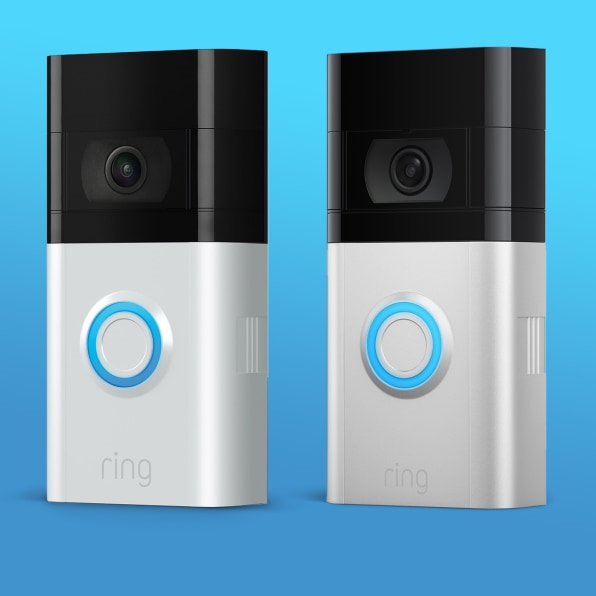
[Photos: courtesy Ring]
For Ring—which was acquired by Amazon in 2018—this is a deliberate strategy. “I do understand why people redesign things all the time,” says Jamie Siminoff, founder of Ring. “To sell more shit.”
To clarify, of course Siminoff would like to continue to sell “more shit,” but his company is taking a unique approach in the industry to do so—one that pulls consumers off of the yearly upgrade cycle we’re accustomed to with phones and other gadgets and prioritizes longevity. The strategy goes against the playbook of pretty much every other consumer electronics company—a playbook that is horribly wasteful and ruining the planet.
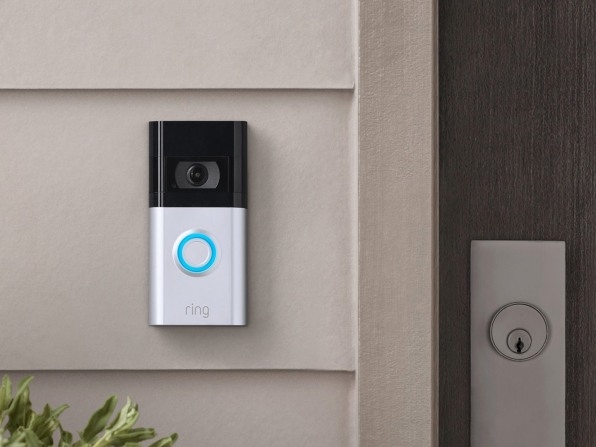
The new Ring
Don’t let looks deceive you. The Ring Video Doorbell 4 has indeed been refreshed since version three launched last year. The technological guts inside include more powerful processors and an onboard AI that can process images locally rather than in the cloud (just like the iPhone and Android phones do today). This allows the new Ring to sip on less battery while doing its job better. Now, the Ring will film someone walking up to your house in “Pre-Roll” color, rather than black-and-white as previous models have done. The new doorbell also offers you the option to “quick reply” to people at the door. Much like an old-school answering machine, you can have your Ring announce canned messages such as “Please leave the package outside” or “We can’t answer the door right now, but if you’d like to leave a message, you can do it now.”
These are improvements, sure, but they aren’t really intended to persuade someone who already owns a Ring to upgrade to a new one. They’re more about staying up-to-date in a competitive industry.

But while most products telegraph their refresh through industrial design—iPhones constantly get new finishes and forms—the Ring Video Doorbell is downright stubborn in its reluctance to change. I’m holding the third version in my hand, since the fourth isn’t ready to ship yet, and I’m shocked at how large this rectangular thing is—somewhere between a first-generation MP3 player and a VHS tape. The two-tone, black-on-silver design reminds me of some of the cringe trends in mid-aughts gadget design. You used to spray some plastic silver and, presto, you have the future!
But as Siminoff explains, this Ring design is both highly functional and proven to resonate with consumers. Before the Ring Video Doorbell was launched in 2014, Siminoff envisioned his product as the defunct Doorbot. It was a product that was technologically promising, but Siminoff recognized that it wasn’t going to woo mainstream consumers as a compelling approach to home security.
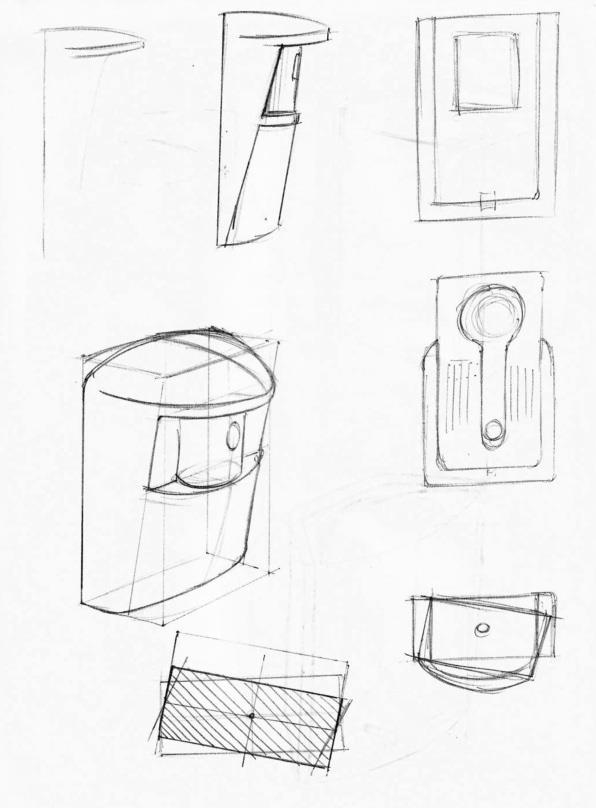
[Image: courtesy Ring]
“The name was almost the tail wagging the dog,” says Siminoff. “The name led to a terrible design.” Doorbot had a curvy design, with a top camera that hearkened to both HAL 9000 from 2001: A Space Odyssey and the dome-shaped security cameras you might see at a bodega.
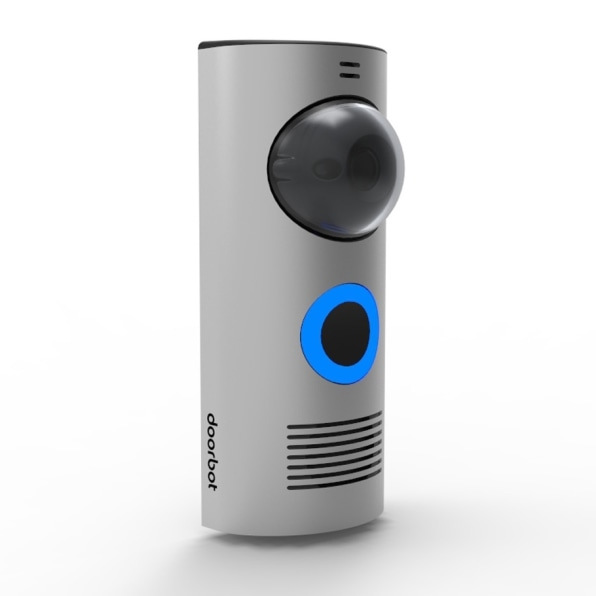
[Image: courtesy Ring]
Honestly, I kind of like it as an object removed from context. But Siminoff is right that the Doorbot called a lot of attention to itself when placed on an actual home, and it carried with it all sorts of sci-fi connotations that distracted from its domestic setting.
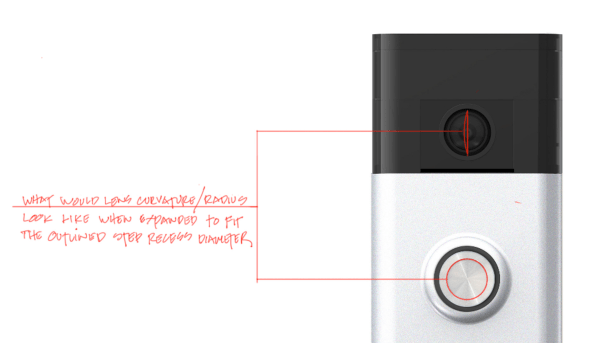
“When we started with a redesign, we said, ‘We need something where the name doesn’t give you a visceral reaction. And design has to fit the aesthetic of the home,’” says Siminoff. Designer Chris Loew created the curved rectangle still used by Ring today. Its top was a translucent black plastic, to allow sensors to spot the motion of someone walking up (which in turn activated the camera to begin filming). The bottom was a big spot for the doorbell, accentuated by a blue ring light. And on the back was a giant battery. This battery was a necessity for homes that didn’t have a power line to the doorbell. Network-connected cameras take a considerable amount of power to operate.
Processing power and AI have both blossomed in the last decade. These updates could, in theory, allow the Ring Video Doorbell to shrink. But one technological hurdle remains, and that’s the lithium-ion battery inside.
“Technology in batteries has not really improved,” says Siminoff. “Battery technology is about the same as it was then, and I don’t see it changing [any time soon].” And until battery power improves, the Ring Video Doorbell cannot shrink much smaller.
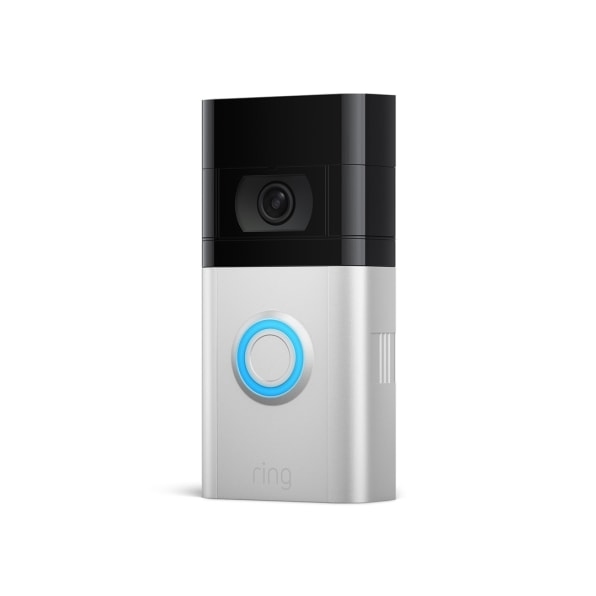
Keeping the design
One reason that the Ring Doorbell is so big is that the battery needs to be big. But with new guts, the Ring Video Doorbell 4 was still a lot of work to produce.
“The aesthetics didn’t change, but literally every single piece in that doorbell [did],” says Jason Mitura, chief product officer at Ring, “and the magic was to get it to fit that iconic form factor, so when you see it from 30 feet away, you know it’s a Ring doorbell.”
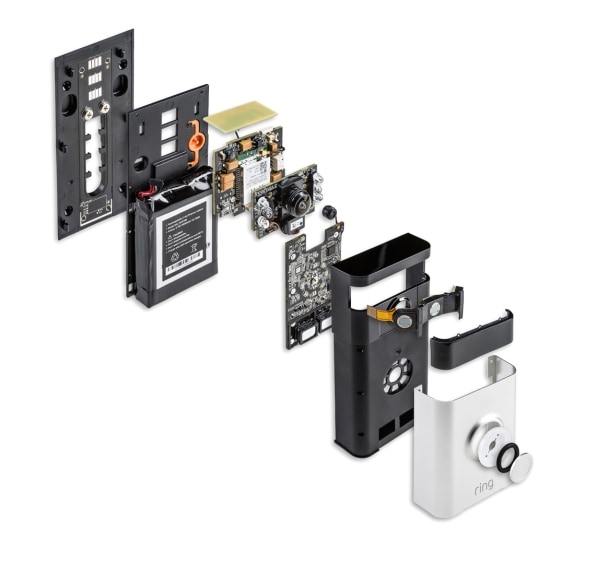
Would it have been easier to simply update the design, in that case? “Yeah . . . for sure,” says John Modestine, head of mobile product and design at Ring.
Yet whereas most products are built to look different each year, Ring wants its products to look the same. There are many reasons for this. First, the Ring is a recognizable brand in home security. If someone can register it from 15 to 30 feet away, as it’s been designed, they might think twice before nabbing a package off your porch.
Siminoff argues that there’s an environmental benefit too. “When you redesign a product, there’s an issue with sustainability,” he says. “No one wants to have an old product on their house . . . or in their hands. For something that can work longer, I’d rather it stay out there longer.” He’s not wrong. The two-year upgrade cycle on smartphones is wrecking the environment.
No doubt, Ring is a rare company that can operate this way. Its parent company, Amazon, doesn’t build its hardware to make money on products such as the Amazon Echo. It prioritizes a long-term customer base. Get as many people using the platform as possible, end stop.
Ring has historically promoted its products in at least two ways aside from simply selling new doorbells to the same customers again and again. It offers subscription plans to record your video feed. Ring also shares app data with third parties, according to the Electronic Frontier Foundation. A Ring spokesperson tells Fast Company it “does not and has never sold customer data” but it does collect data for purposes of customer service and personalized advertising that you can opt out of. In any case, Ring’s unchanging design is something of a luxury in the world of business, offset to some extent by data collection.
All of that said, Ring’s rigid design philosophy is notable—the equivalent of wearing the same dress to the Golden Globes and the Oscars, and doing so for years. As the world battles for its own survival, we cannot continue to embrace planned obsolescence or bow to the social pressure to always own the newest things.
(30)

